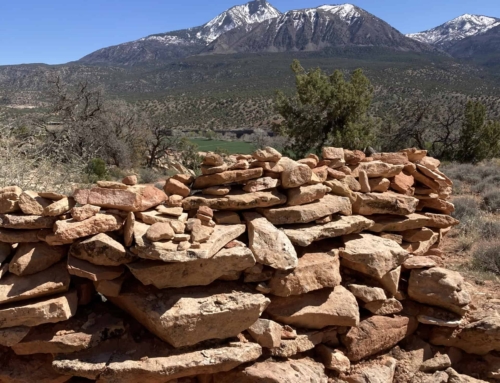We are all going to die. That’s a fact.
All of us also need to lose ten pounds, exercise five times a week, quit smoking and stop listening to identity politics media.
As humans, we are one of the few species that can project and imagine the future. And we are really not very good at it. Given that we know we are going to die eventually, we rationalize and postpone changing our bad habits.
So what makes us environmentalists believe that telling people that we are all going to die by cooking in our own juices, is going to cause us to change our ways? The earth is in a world of hurt. We certainly need to collectively act to save ourselves and our children from an ugly future. It might be satisfying to use fear as a motivator, but it’s not working, and it’s not helping.
Why is it satisfying to use fear? I’ve thought about this, and the best I can come up with is that our brains are wired for fear. We need to be able to react quickly when the saber-toothed tiger comes prowling. Those that react, survive and pass on that gene.
It’s also clear that today’s media is fear-based. We have an attention-based economy. That economy is driven by clicks, buzzes, responses, likes, shares, and more. (Please stop looking at your phone now.) What gets more clicks and our attention? Fear. So we see all kinds of stories that create fear. Someone in your city of Atlanta has Ebola. Will the city be the epicenter of a North American plague? The story omits the fact that Ebola is really hard to catch and the person is quarantined at the CDC. Or, maybe you read a headline, “When will ISIS come to your backyard?” The story omits that more people are killed by auto-accidents in the US than by ISIS-based terror attacks. But we get a reaction. When we click and respond, our brains produce dopamine. A natural high. So like rats in an experiment, we keep clicking.
Fear is good for capturing attention, but what happens next? When the information is too scary, we tend to discount it and ignore it. We prioritize our lived experiences over future predictions. When we see those awful pictures of lung cancer for cigarette campaigns our brains go right past them because we don’t have lung cancer, and they’ll have a cure soon. We tend to switch the channel when the commercial comes on. The same thing happens in the environmental movement.
When we see people in floods or droughts or melting ice caps, it can create awareness, but it can also create a feeling of hopelessness. This lack of hope is often associated with inaction and decreased goal-directed behavior. This is particularly true when the action being called for is out of proportion, such as “Our icecaps are melting, please recycle.” We are less likely to act when the results seem hopeless and the ending seems inevitable. We experience something I will call “Environmental Fatigue.” The key terms here should be hope and proportionality. Hope is the antidote to fear.
A key factor to reduce hopelessness is making the environmental story about a collective effort. The climate crisis is the most serious problem we face as a civilization, and “together” we can act. No doubt we need to act individually, but when I am told I must become a vegetarian because of cow farts, I tend to discount my personal actions as having an impact. Rather if I can support or call my legislators to get them to vote for more renewable energy or less coal or more electric vehicles, that is something that I can do. Can I subscribe to Renewable Energy Credits from my utility? Can I lease an electric vehicle? My neighbor does. By focusing on solutions, it gives us a sense of hope and accomplishment.
The environmental cause can also be helped by stories of success. We are motivated by love, belonging, mattering and meaning. These can be conveyed through stories. There are lots of stories of environmental heroes who are helping. When we tell stories of environmental heroes, we create a sense of desire to belong. Belonging to the group is a first step to getting people to act. So when Wangari Muta Maathai, a Kenyan activist started a movement to plant 50 million trees to stop desertification in East Africa, we are all motivated by a sense of hope. It causes us to want to help.
Creating doomsday scenarios is a reaction to the frame that global warming isn’t real (or can’t be helped). We will never succeed by trying to argue against this frame. This doesn’t mean that the truth or severity of our situation isn’t important. We are better served by, not ignoring facts, but using them judiciously. It’s a matter of balance. The civil rights movement was faced with all sorts of hideous and fear-based situations, but it also had and still has heroes that inspire hope and create a vision for collective action. We need more of this in the environmental movement and less doomsaying if we expect people to begin to take action.
We Are All Connected!
Hobie,
L. Hobart Stocking
SkyWaterEarth.com
hobart@skywaterearth.com
651-357-0110
Facebook: @SkyWaterEarthConnected
Twitter: @SkyWaterEarth








Leave A Comment